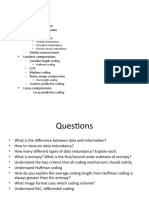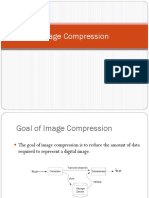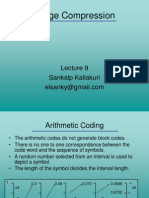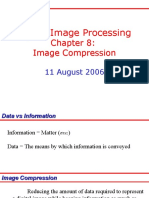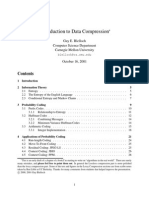0% found this document useful (0 votes)
26 views42 pagesECE359 - Image Compression
The document discusses image compression techniques in multimedia signal processing, focusing on data redundancy, the need for compression, and various methods such as coding redundancy, spatial and temporal redundancy, and irrelevant information. It outlines different compression models, including Huffman coding, Golomb coding, arithmetic coding, and LZW coding, along with their algorithms and applications. Additionally, it covers fidelity criteria for measuring image quality and the importance of entropy in quantifying image information.
Uploaded by
Fatma NewagyCopyright
© © All Rights Reserved
We take content rights seriously. If you suspect this is your content, claim it here.
Available Formats
Download as PDF, TXT or read online on Scribd
0% found this document useful (0 votes)
26 views42 pagesECE359 - Image Compression
The document discusses image compression techniques in multimedia signal processing, focusing on data redundancy, the need for compression, and various methods such as coding redundancy, spatial and temporal redundancy, and irrelevant information. It outlines different compression models, including Huffman coding, Golomb coding, arithmetic coding, and LZW coding, along with their algorithms and applications. Additionally, it covers fidelity criteria for measuring image quality and the importance of entropy in quantifying image information.
Uploaded by
Fatma NewagyCopyright
© © All Rights Reserved
We take content rights seriously. If you suspect this is your content, claim it here.
Available Formats
Download as PDF, TXT or read online on Scribd
/ 42













